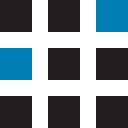Home shopping delivery is a highly complex operation that requires drivers to achieve time-sensitive, multi-drop deliveries in often challenging urban traffic conditions. Route optimisation is proven to help improve productivity for retailers, as well as cutting fuel consumption. And when combined with vehicle tracking or telematics cameras it can deliver even bigger benefits.
Route optimisation goes beyond basic route planners and sequencers to deliver substantial savings for fleet operators. It achieves this by using sophisticated algorithms to make calculations factoring in all delivery times and locations, then assigning them to vehicles in a way that maximises vehicle utilisation, while also complying with employment and safety laws for drivers.
Furthermore, route optimisation can be fully integrated with telematics and vehicle tracking. Self-learning algorithms can analyse the telematics data to find even bigger savings the next time they plan fulfilment of orders.
You can also integrate route optimisation with telematics cameras such as Trakm8’s award-winning RH600, helping to further improve road safety and reduce exposure to fraudulent or disputed insurance claims.
Last but not least, route optimisation can integrate with handheld devices. This means that drivers can receive the next drop-off destination, along with the route and directions, on their mobile phones. If you add electronic proof of delivery (ePod) you can also use mobiles to provide a digital signature capture from every customer.
Iceland Foods
A great example of a journey through route optimisation and integration is Iceland Foods. Initially the company used Trakm8’s route optimisation to achieve a substantial increase in delivery fleet productivity. The retailer, which has more than 1,500 delivery vehicles, was able to increase the number of drops per two-hour window from six to eight – and the number of delivery windows available to customers rose to seven per day.
Iceland Foods then invested in telematics from Trakm8 and integrated it with route optimisation. The telematics system helped Iceland to identify drivers with bad habits and re-train them. This delivered a 40% drop in accidents and a 20% decrease in the total cost of accidents. Fleet expenditure on tyres and vehicle servicing also declined.
Following this success, Iceland Foods moved from separate dash cam and telematics devices to the Trakm8 RH600 telematics camera. As a result, Iceland was able to prove that 50% of insurance claims made against the company were fabricated. Instances where vehicle camera footage was able to support a disputed claim in favour of the company also increased by 260%, compared to the previous dash cams installed in the fleet.
If you would like to find out more about our route optimisation solutions, fill out the short form below and one of our team will be in touch. Alternatively, call us on 0330 311 5157 or email us at info@trakm8.com.


